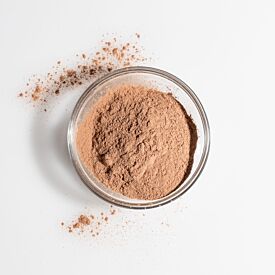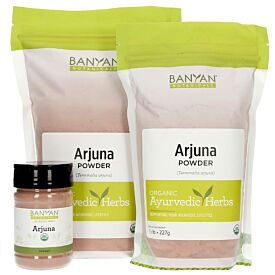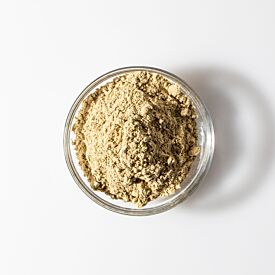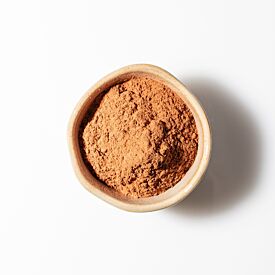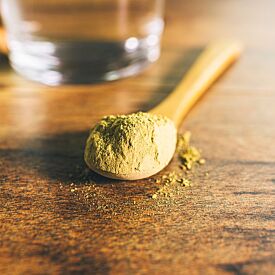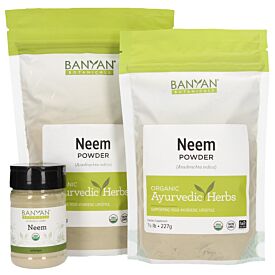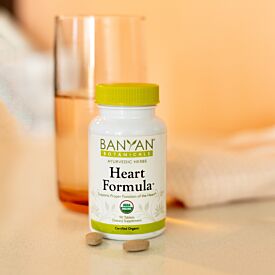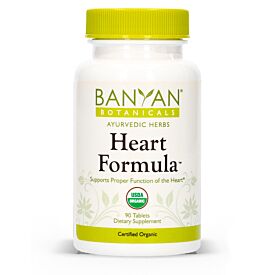Ayurveda Heart Health: Cleansing Circulatory Pitta
A 59 year-old (pitta-vata prakriti) corporate executive male comes to you seeking optimal health. On your evaluation, you notice he has a reddened complexion, his skin is warm to touch, and his waist circumference is increased at 111 cm. He mentions a very stressful job, with demanding hours, which leads to a poor diet. He also shares that lying on his back and taking deep breaths helps when his stress is very high. What herb are you most likely to incorporate in the formula?
- Punarnava
- Kutki
- Triphala guggulu
- Guduchi
Answer: D
(The background to this article is provided in the first part of this series, Ayurveda Heart Health: The Pitta Factor.)
It is evident that this client has high pitta in the blood (rakta dhatu)—red complexion, ears that are warm to touch, stress in addition to a clearly pitta-predominant prakriti. For this reason, the broad pitta-pacifying nature of guduchi would likely serve him best. Punarnava is excellent at moving kapha, and while kapha is involved in this client (as evident from his waist circumference), it is not the primary issue. Likewise, triphala guggulu would also benefit this client, but the intensity of pitta should first call our attention. High cortisol (from high stress) is the primary driver of central fat distribution. Kutki is an aid for the liver, the root of rakta dhatu, but Guduchi provides a widespread anti-pitta effect.
In the last article The Pitta Factor, we explored pitta’s role in the circulatory system. This article will offer suggestions to sustaining a healthy circulatory system and heart chakra. As a reminder, for overall care to this system, consider Heart Formula as a balanced, tridoshic formula.
Cleanse Excess Pitta
The good news is that rakta dhatu is only the second tissue layer, according to Ayurveda. As such, simple changes in diet and lifestyle can quickly influence its nature, and toxins can usually filter out without much difficulty. Thus, a consistent diet with decreased spiciness, oiliness, and fermentation (including alcohol!) will go a long way. Do encourage healthy omega-3 fatty acids and cooling drinks, such as cucumber shakes (made with organic cucumber, milk, and your favorite sweetener), mint or fennel tea, and water with rose essence. A dose of aloe vera daily will rapidly cool the circulation as well.
Guduchi has earned a place in most pitta formulations because of its sweeping anti-pitta action. Arjuna, very supportive to the heart organ and circulation in general, also is effective at purging pitta, specifically from rakta dhatu. It is the king of herbs when it comes to maintaining a healthy circulatory system, and there is an increasing body of research growing to support its credibility.1, 2, 3, 4 Manjistha and neem are two other noteworthy blood cleansers. Of course, an easy, go-to formulation is Healthy Pitta, and think of Blood Cleanse for a more intense effect. Augment the herbs’ actions with aloe vera or a cool glass of lassi (one tablespoon of cultured yogurt mixed in a glass of water).
Address the Source of Pitta
In addition to releasing excess pitta, it is essential to identify and address the root cause of the excess pitta. Stress and emotions like anger and jealousy are very noteworthy. Encourage your client to explore the origins of these and find ways to release—journaling, rubbing the soothing Bhringaraj Oil on the head and soles of the feet before sleep, meditating, gentle exercise such as yoga and pranayama (Nadi Shodhana is exceptionally effective), and Stress Ease for herbal support. Another significant contributor is excess sugar.5, 6 Sweet Ease, containing shardunika, “the destroyer of sweet,” helps maintain healthy blood sugar levels already within the normal range. Always remember to ask about tobacco use, a huge instigator of pitta. For this, simply asking and providing consistent (at least monthly) support can make all the difference for your client.
Support the Liver
If you are still struggling with balancing pitta, look at the liver. It could be that pitta has lodged deep in this home base of rakta dhatu. A Traditional Ayurvedic Cleanse will work at all tissue layers and is most effective at decongesting the liver (for more information, visit the Cleanse page on our website). For some initial support, however, bhumyamalaki is the quintessential herb for the liver. Take a half-teaspoon at night with warm water daily. Bhumyamalaki is also the primary herb in Liver Formula, which is a great alternative in tablet form with other bitter herbs that bolster the liver. Incorporate side twists in yoga protocols, recommend cooking with turmeric, and remember the importance of taking a break!
Bring Freedom to the Heart Chakra
The heart chakra is the center of connection; we feel a connection with all beings, including our inner Self from this center. The heart chakra becomes debilitated when we lose that connection. I have found that a beautiful metric of the heart chakra’s healthiness is whether the client lives with a sense of abundance. Is your client able to share love, energy, and even money freely with others? Or does competition, fear, resentment, jealousy prevent the flow?
Thus, to work at the root of clients, like our case study client, is to inspire them to reconnect with the universe. Push your client to do the things that bring a sense of expansion to the heart with an attitude of compassion and courage. Yoga sequences with backbends and chest openers are revitalizing. Suggest lion’s pose without any sense of self-consciousness. The color of the heart chakra is green. Wear green clothes and sit in nature where the color green is plentiful.
Grasping the different layers of health within this one system can allow your client to heal on many levels. You have the capacity to help the many people like our case study client with the thorough approach of Ayurveda.
References
1 Dwivedi S, Jauhari R. Beneficial effects of Terminalia arjuna in coronary artery disease. Indian Heart Journal. 1997;49:507-10.
2 Dwivedi S, Agarwal MP. Antianginal and cardioprotective effects of Terminalia arjuna, an indigenous drug, in coronary artery disease. J Assoc Physicians India. 1994;42:287-9.
3 Bharani A, et al. Salutary effect of Terminalia Arjuna in patients with severe refractory heart failure. International Journal of Cardiology. 1995;49:191-9.
4 Ram, et al. Hypocholesterolaemic effects of Terminalia arjuna tree bark. Journal of Ethnopharmacology. 1997;55:165-9.
5 Jonasson L, et al. Advice to follow a low-carbohydrate diet has a favourable impact on low-grade inflammation in type 2 diabetes compared with advice to follow a low-fat diet. Annals of Medicine. 2014 May;46(3):182-7
6 Isordia-Salas I, et al. Proinflammatory and prothromotic state in subjects with different glucose status before cardiovascular disease. Journal of Diabetes Research. 2014;2014:631902



